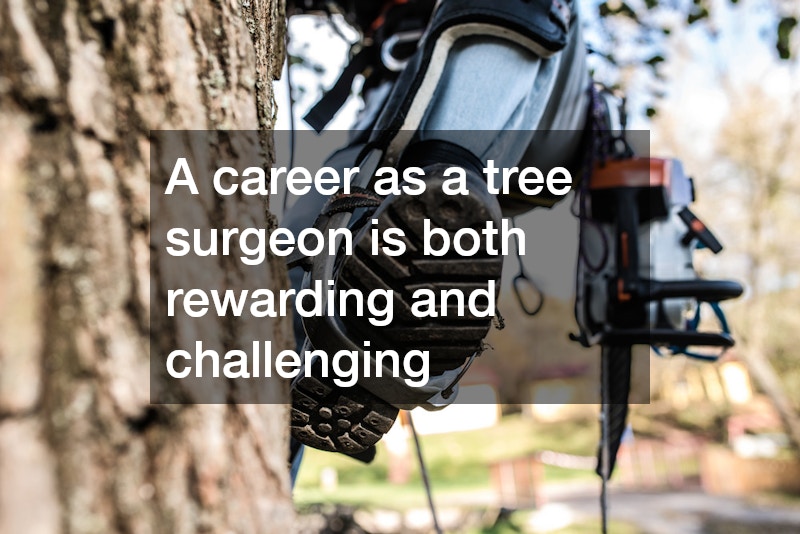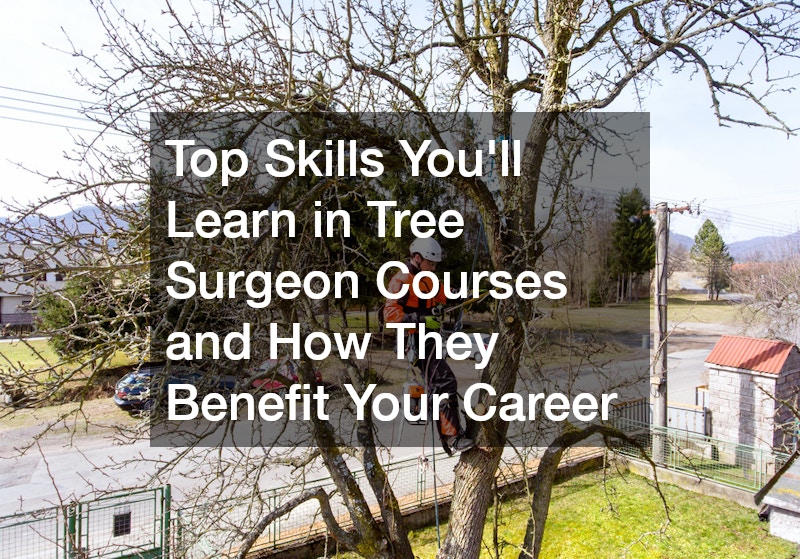A career as a tree surgeon is both rewarding and challenging, offering the opportunity to work outdoors while making a significant impact on the environment. Whether you’re passionate about conservation, the health of trees, or simply enjoy hands-on work, becoming a tree surgeon opens doors to an array of professional opportunities. However, it’s not a career you can jump into without the proper knowledge and training. Enrolling in tree surgeon courses is an essential step to gaining the skills and expertise needed to succeed in this specialized field.
In this article, we’ll explore the top skills you’ll learn in tree surgeon courses and how these competencies can benefit your career.
1. Tree Identification and Biology
Understanding tree biology is the cornerstone of a successful career as a tree surgeon. In tree surgeon courses, one of the first things you’ll learn is how to identify different species of trees and understand their biology. You’ll gain knowledge of the structure of trees, their growth patterns, and how different species react to environmental factors such as pests, diseases, and climate changes.
Here’s how this skill benefits your career:
Accurate Diagnosis: By identifying tree species and understanding their biological makeup, you’ll be able to diagnose issues like disease or rot accurately.
Effective Treatment: With knowledge of tree biology, you’ll know how to recommend the correct treatment or care method, improving your service quality and earning client trust.
This foundational knowledge makes you a reliable expert in the field, and clients will trust your advice when it comes to maintaining or saving their trees.
2. Tree Climbing and Aerial Rescue Techniques
Tree surgeon courses place a significant emphasis on practical, hands-on skills such as tree climbing and aerial rescue. Tree surgeons often have to work at great heights, using ropes and harnesses to navigate branches safely. Climbing isn’t just about reaching the top of a tree; it involves understanding safety protocols and knowing how to use the right equipment to prevent accidents.
Skills in this area include:
Safe climbing methods: Learning the techniques to ascend and descend trees efficiently and safely.
Aerial rescue: Training to perform rescues if a fellow worker encounters an emergency while climbing.
Equipment handling: Proper use of ropes, harnesses, and other climbing gear to ensure safety during work.
This skill is crucial for performing your job safely and effectively. Not only does it enhance your professional reputation, but it also reduces the risk of injury, allowing you to work confidently at heights.
3. Tree Pruning, Felling, and Surgery Techniques
Tree surgeons are responsible for pruning, felling, and performing surgery on trees, all of which require specialized techniques. Tree surgeon courses teach you how to evaluate a tree’s condition, determine what interventions are needed, and execute those tasks safely.
Key pruning and surgery skills include:
Pruning for health: Removing dead or diseased branches without harming the tree.
Tree felling: Cutting down trees safely, especially in urban environments where falling trees could pose risks to property and people.
Surgery: Performing more advanced techniques, such as bracing or cabling to support a tree’s structure, or removing large diseased portions without destabilizing the tree.
Developing expertise in these areas ensures that your work is both safe and effective, minimizing potential damage to property or the environment. Additionally, mastering these techniques can open doors to more advanced roles or higher-paying jobs within the arboriculture field.
4. Pest and Disease Management
Trees are susceptible to a variety of pests and diseases that can significantly reduce their lifespan if left untreated. A significant part of tree surgeon courses is dedicated to identifying and managing these threats. You’ll learn to recognize the early signs of common diseases, such as Dutch elm disease, and pest infestations like emerald ash borers.
Here’s how this skill benefits your career:
Prevention and Treatment: Early detection of diseases and pests allows for quicker intervention, which could save a tree from being felled.
Client Trust: Clients value professionals who can not only diagnose problems but also provide effective treatment solutions, increasing customer satisfaction and repeat business.
Expertise in pest and disease management makes you an invaluable resource for clients who want to protect their trees from environmental threats, boosting your professional credibility.
5. Health and Safety Compliance
Health and safety are critical in arboriculture, as tree surgery often involves hazardous situations. Tree surgeon courses emphasize the importance of adhering to strict safety guidelines, not only for the climbers but also for workers on the ground and nearby property owners.
Key components of health and safety training include:
Risk assessment: Identifying potential hazards before starting work, such as electrical wires, unstable branches, or the proximity of buildings.
Safe use of chainsaws and other machinery: Learning how to handle dangerous equipment correctly to avoid accidents.
First aid: Basic first aid training is often part of tree surgeon courses, ensuring you know how to respond to emergencies.
Safety training is not just about keeping yourself and your team safe; it also demonstrates to clients that you operate with professionalism and care. This can significantly impact your career, as businesses and individuals often prioritize contractors who follow health and safety regulations closely.
Final Thoughts: Building a Rewarding Career Through Tree Surgeon Courses
Enrolling in tree surgeon courses is the key to acquiring the specialized skills necessary for a successful career in arboriculture. From tree identification and climbing techniques to pruning and disease management, these courses equip you with the knowledge and practical experience needed to tackle the challenges of tree surgery. The hands-on skills you develop not only ensure that you perform your job safely and efficiently but also position you as an expert in your field.
By mastering these essential skills, you’ll be better prepared to grow your career as a tree surgeon, offering clients a high level of service while contributing to the health and preservation of trees in both urban and rural environments.
.

